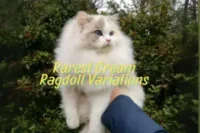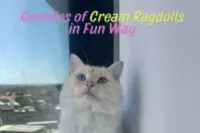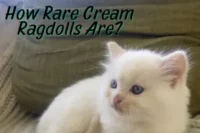Rare Lilac Ragdoll Variations: Tortie, Solid, Cream, Sepia & More
Published: 31 Aug 2025
If you have ever seen a Lilac Ragdoll, you know they are like little clouds with paws. Now, imagine that gentle lilac coloring combined with even more unique patterns like tortie, sepia, cream or tabby. That’s where the magic of rare Lilac Ragdoll variations truly begins!
We have been lucky to care for Ragdolls in a rainbow of colors but the Lilac ones always make us stop and stare. Their coats shimmer with pastel shades, almost like they were brushed with lavender and silver. Every time one of our Lilac fluffballs curls up beside us, we feel like we are cuddling a living piece of art.
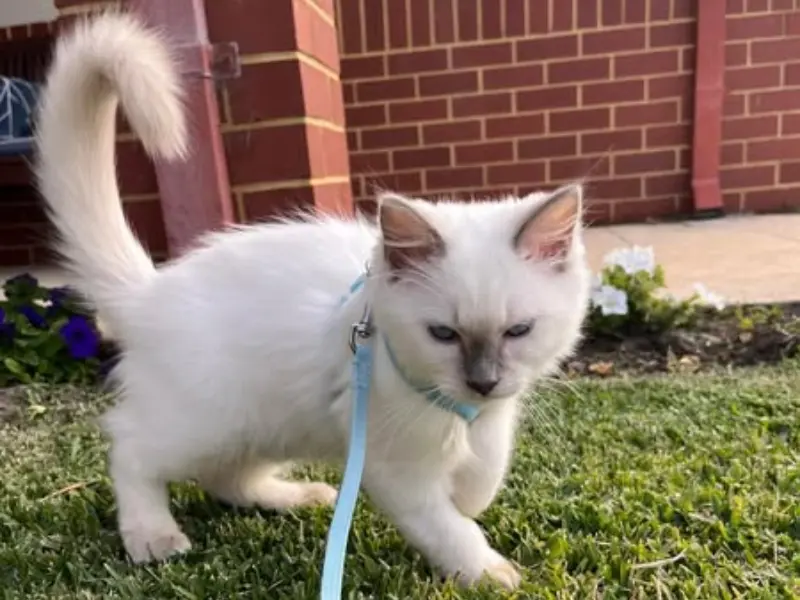
In this guide, we will explore the rarest and most enchanting Lilac Ragdoll variations, including:
- Lilac Tortie and Lilac Tortie Bicolor
- Solid Lilac and Solid Lilac Mitted
- Lilac Cream Point and Lilac Cream Lynx Point
- Lilac Sepia
- Lilac Tabby, Lilac Tabby Point and Lilac Tabby Mitted
We will share what makes each of these cats so special, how to tell them apart and little care tips we have learned along the way. Whether you are already a proud cat parent or just daydreaming about bringing home a Lilac beauty, this post will give you a purr-fect peek into their magical world.
So, are you ready to meet these rare pastel cuddle buddies? Let’s dive into the fluff!
What Makes Lilac Ragdolls So Special?
Whenever we look at a Lilac Ragdoll, it feels like staring at a fluffy piece of pastel artwork. Their coats are a gentle mix of soft gray with a pinkish, lavender glow—a color so light and dreamy that it almost looks like a misty cloud at sunrise. That’s what makes them stand out from the more common Ragdoll shades like seal or blue.
The lilac color is actually a “dilute” version of chocolate. In simple words, it means the chocolate shade has been lightened by genetics, turning it into this gorgeous pale lavender-gray. Because of these special genetics, Lilac Ragdolls are much rarer than other color variations. Breeders often need to pair very specific parents to produce them which is why you don’t see them as often.
But it’s not just their coats that make them so lovable. Lilac Ragdolls have the same sweet, floppy and affectionate personalities that all Ragdolls are famous for. They follow us from room to room like little shadows, flop dramatically into our arms when we scoop them up and purr like tiny engines when they get their belly rubs.
We will never forget the first time we saw a Lilac Ragdoll in person. Their fur almost shimmered in the light and those big, soulful blue eyes just melted our hearts. It’s one of those moments you never forget like falling in love at first sight with a fluffball.
So, what makes Lilac Ragdolls so special? It’s the perfect mix of rarity, beauty and that signature Ragdoll charm. And when you add unique patterns like tortie, sepia, or tabby, they become even more magical!
Let’s start discussing these rare ragdoll beauties in Lilac Point variations.
Mix of Lilac and Tortie Ragdolls Patterns
In this pattern a two coloured tortie mixes up with stunning lilac ragdoll beauty and produces a rare and beautiful Lilac Tortie Ragdoll.
Lilac Tortie Ragdoll
A Lilac Tortie Ragdoll is like a pastel painting come to life. “Tortie” stands for tortoiseshell which simply means their coats are sprinkled with patches of two colors. In this case, the lilac base mixes with soft cream or apricot tones and creates a mottled look that’s both unique and beautiful.
Most torties are female and that’s because of genetics. The color mix comes from the X chromosome which means girl cats get to show off this patchy, painterly pattern far more often than the boys. So if you meet a Lilac Tortie Ragdoll, you are most likely meeting a lovely lady fluffball!
We adore Lilac Torties because they often seem to have extra personality, some cat parents even call it “tortitude.” Our Tortie Ragdoll girls can be sweet cuddle bugs one minute and playful little whirlwinds the next. It’s like they carry a bit of sass in their pastel coats, and honestly, we wouldn’t have it any other way.
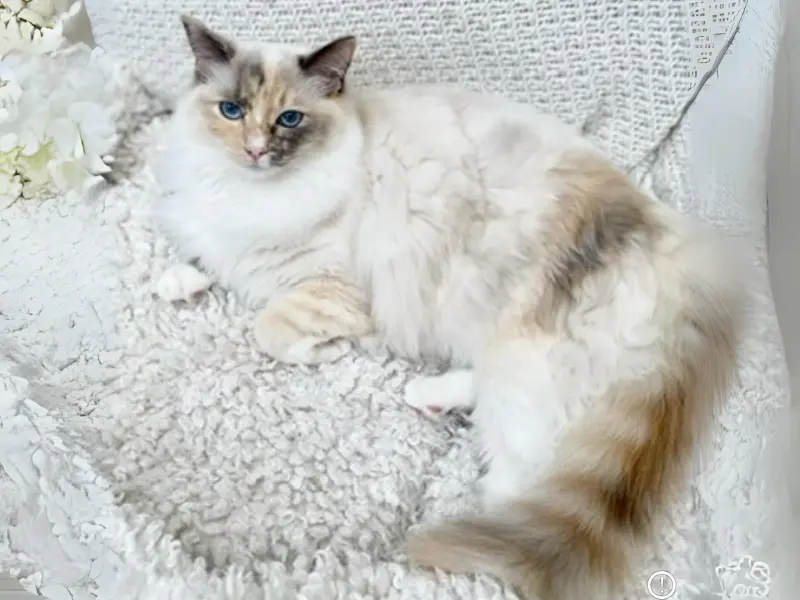
Lilac Tortie Bicolor Ragdoll
Now, imagine mixing the soft mottled tortie pattern with the classic Ragdoll bicolor look—that’s the Lilac Tortie Bicolor Ragdoll! These beauties not only have lilac-and-cream patches but also the signature white markings that Ragdolls are famous for: white paws, chest, tummy and that adorable white triangle on their face.
The result? A pastel dream that looks like it was dipped in whipped cream. These cats are true show-stoppers and when the sunlight hits their coats, you can see every delicate shade shimmering.
Personality-wise, Lilac Tortie Bicolors are just as sweet and loving as their Ragdoll cousins. They will happily flop in your arms, follow you around the house and then surprise you with a playful paw tap when you least expect it. They keep life fun, fluffy and full of love.
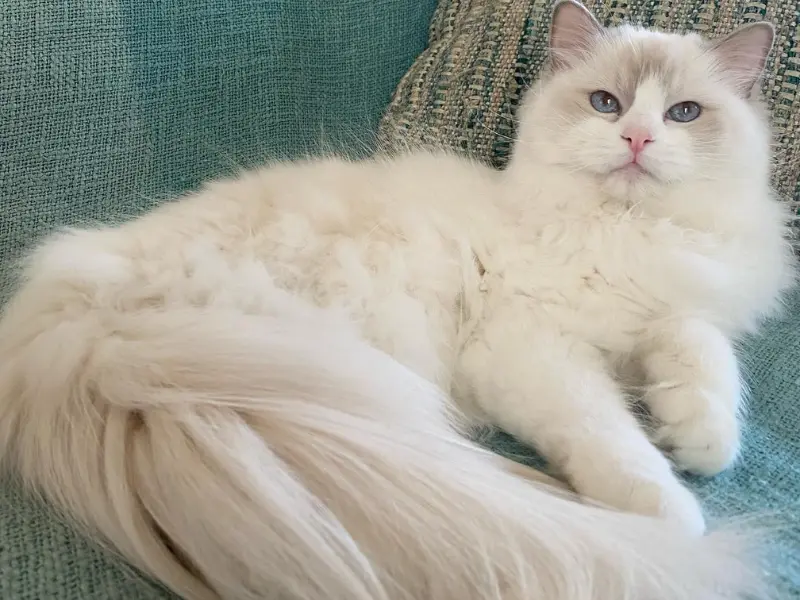
Solid Lilac Ragdolls
A Solid Lilac Ragdoll is the picture of elegance. Unlike the classic “pointed” Ragdoll (where the face, ears, paws and tail are darker), solids have the same soft lilac shade all over their body. Imagine a teddy bear dipped in lavender-gray velvet and that’s what a Solid Lilac looks like!
Their coats appear plush and uniform, giving them a very regal, almost doll-like presence. When we first met a Solid Lilac, we couldn’t stop petting them because their fur looked so even and silky that it felt like stroking satin.
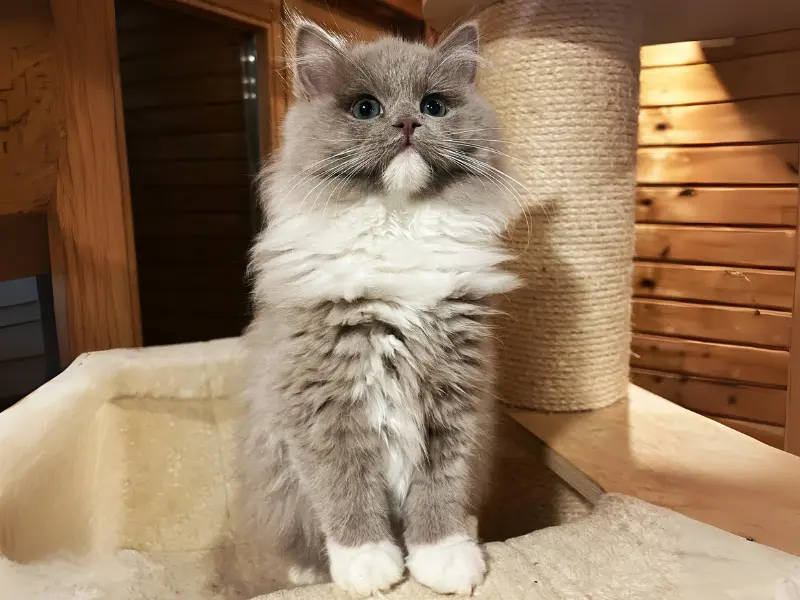
Even though their looks are rare, their personalities are pure Ragdoll: gentle, floppy and endlessly affectionate. They love curling up in cozy spots, gazing at us with those deep blue eyes and stretching out across the sofa like they own the whole living room (and let’s be honest—they do).
Solid Lilac Mitted Ragdoll
If the Solid Lilac was not already adorable enough, the Solid Lilac Mitted Ragdoll adds a pair of white “mittens” to the mix. These soft little paws look like they have been dipped in cream and they never fail to make us smile. Some also have a cute white chin or tummy which makes them even more charming.
We love how the mittens add just the right touch of playfulness to their elegant coat. When these Solid Lilac Mitted jump up onto the bed and tucks their white-pawed feet under them, they look like the coziest, most cuddly stuffed animal you could ever wish for.
Of course, their personalities are just as sweet as their looks. Solid Lilac Mitteds are usually big snugglers, always ready for lap time or a gentle paw tap when they want attention. And trust us—when those mittened paws reach out for you, resistance is impossible!
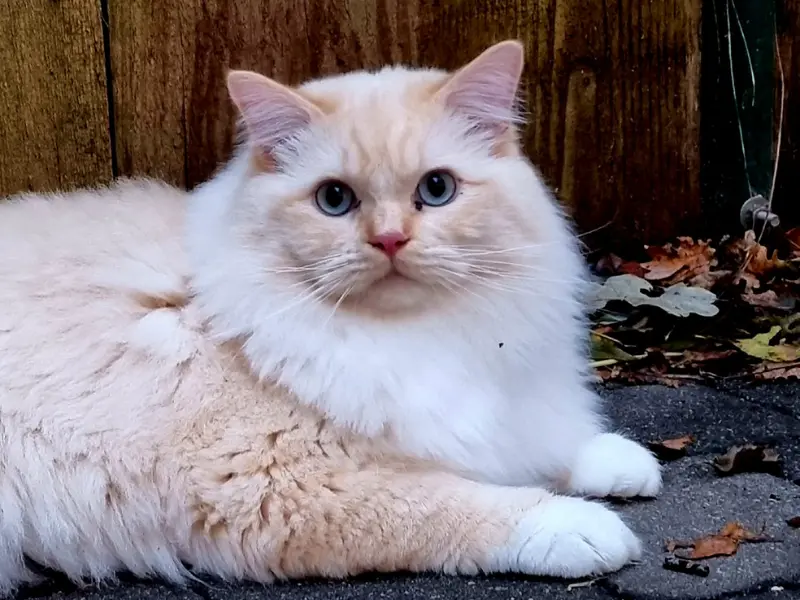
Lilac Cream Ragdolls
It is a mix of lilac and cream ragdoll. The beauty it produces forces us to stop and look at for a long time.
Lilac Cream Point Ragdoll
A Lilac Cream Point Ragdoll is pure pastel magic. Their coats blend soft lilac with warm cream highlights, mostly showing up on their “points” like the face, ears, paws and tail. This gives them a delicate, watercolor-like look, almost as if an artist lightly brushed creamy strokes over their lilac base.
Every time we see one of these beauties in the sunlight, we notice something new in their coloring. Some have creamier faces, while others show it more on their tails or ears. No two are ever exactly the same which makes each Lilac Cream Point Ragdoll wonderfully unique.
Their personalities are just as sweet as their appearance. Our Lilac Cream Point loves curling up right in the warmest spot of the couch, then looking at us with that “come cuddle me now” stare. And of course, we always give in. Who could resist such a fluffy little request?
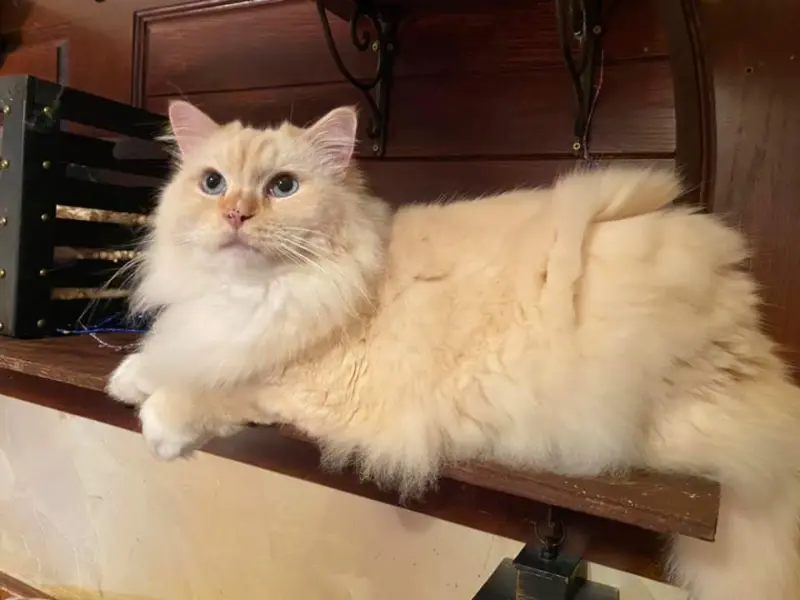
Lilac Cream Lynx Point Ragdoll
Now, take that dreamy lilac-and-cream coloring and add soft stripes—this is the Lilac Cream Lynx Point Ragdoll. “Lynx” is just another way of saying tabby stripes which show up on the face, tail and legs. The mix of stripes with pastel lilac and cream makes these cats look extra magical.
When we first saw a Lilac Cream Lynx Point, we thought they looked like a fairytale cat—delicate stripes framing their big blue eyes with the cream and lilac dancing together in their fur. They are very rare, eye-catching and unforgettable.
Personality-wise, our Lynx Point always seems a little more curious than the rest. She will tilt her head at every new sound, paw at dangling strings and then flop over dramatically when it’s time for belly rubs. They are playful yet just as loving as any Ragdoll should be.
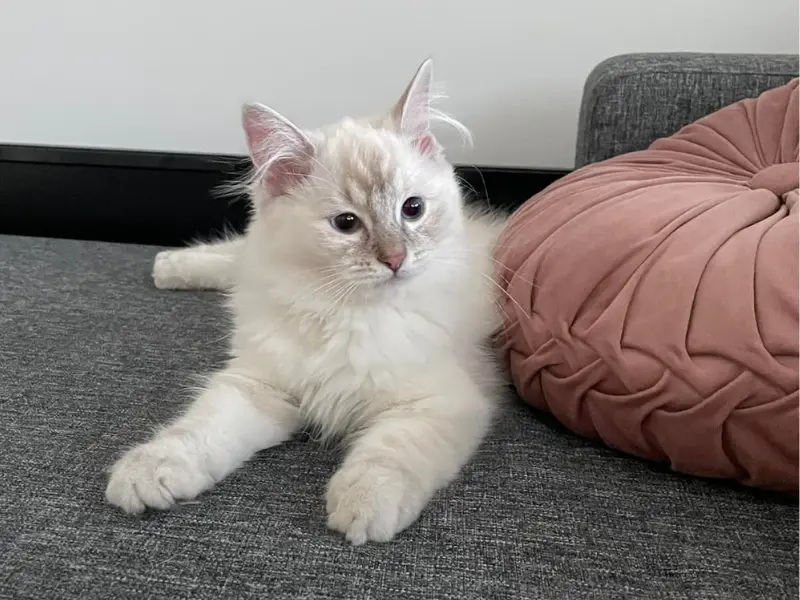
Lilac Sepia Ragdoll
The Lilac Sepia Ragdoll is a rare and velvety variation that makes us stop and stare every single time. While traditional Lilac Ragdolls have lighter, pastel tones, sepias carry a warmer, richer version of the lilac shade. Their fur often looks a little deeper, almost like soft cocoa mixed with lavender mist.
What really makes them stand out is their coat texture and glow. Sepia coats tend to look smoother, shinier and extra plush like a fluffy piece of velvet you just can’t stop petting. When one of our Lilac Sepias lounges in a sunbeam, their fur seems to shimmer with warmth and it’s impossible not to reach out for a cuddle.
Their personalities are just as charming as their looks. Our Lilac Sepia is a total cuddle magnet, always hopping into our laps no matter what we are doing. She loves chin rubs, purrs like a little motor and has a way of wrapping us around her paw in seconds.
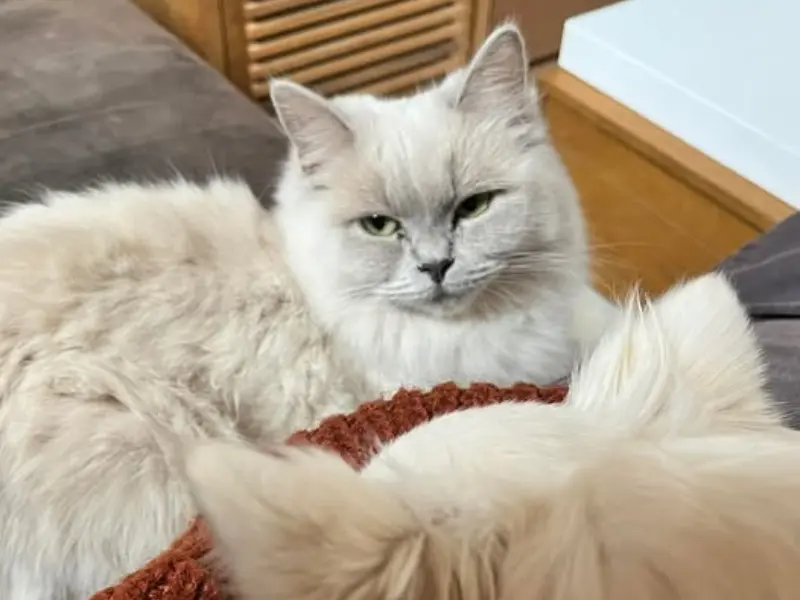
Lilac Sepias are rare but if you ever meet one, you will understand why we think they are living treasures. They carry all the sweet, gentle traits of the Ragdoll breed, wrapped up in a coat that looks like it was spun from silk and sunshine.
Lilac Tabby Ragdolls
The Lilac Tabby Ragdoll is like a pastel cloud with delicate stripes drawn across it. “Tabby” simply means striped or patterned fur and in this case, those stripes are laid gently over a lilac base coat. The effect is soft and subtle—think of faint pencil lines brushed over lavender-gray fur.
Every Lilac Tabby has its own little twist. Some show their stripes more boldly on the legs and tail, while others have that classic “M” shape on the forehead, which always makes us smile. Our Tabby girl has the sweetest striped cheeks and when she looks up at us with her big blue eyes, it feels like she’s smiling back.
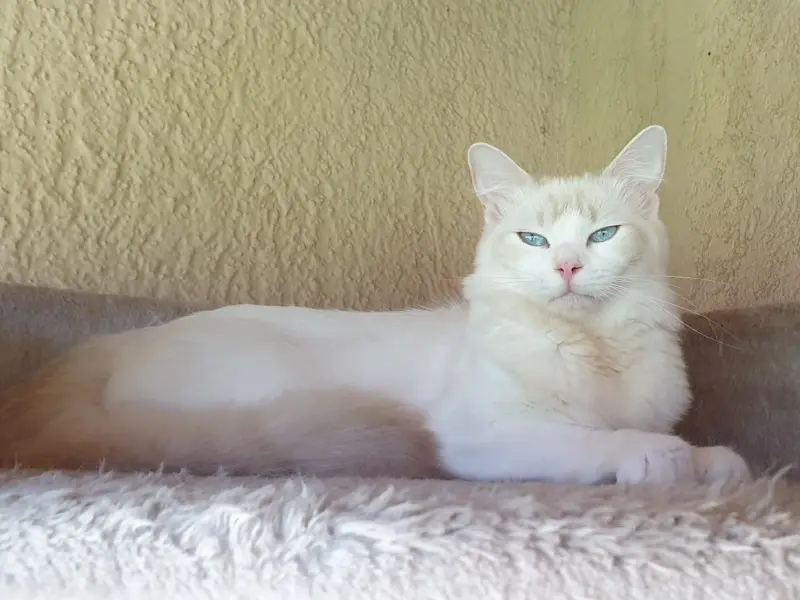
Lilac Tabby Point Ragdoll
Now, picture those tabby stripes combined with the pointed pattern Ragdolls are so famous for. The Lilac Tabby Point Ragdoll has stripes mostly on the darker “points”—the face, ears, tail and legs—while the rest of the body stays lighter.
We love how the stripes frame their face, giving them an alert, curious look. One of ours looks like she’s wearing a little striped mask, which makes her expressions even more adorable. These kitties are both striking and sweet, like a rare piece of art you can cuddle.
Lilac Tabby Mitted Ragdoll
Finally, we have the Lilac Tabby Mitted Ragdoll—possibly one of the cutest combos out there. They carry all the tabby striping but with the added charm of white mittens on their front paws and often little white boots on their back feet. Some even have a white chin and tummy, making them look like they have dressed up for a fancy occasion.
Our Lilac Tabby Mitted boy loves showing off his mittens when he stretches out, paws in the air like he’s saying, “Look how cute I am!” And of course, he’s right, we fall for it every single time.
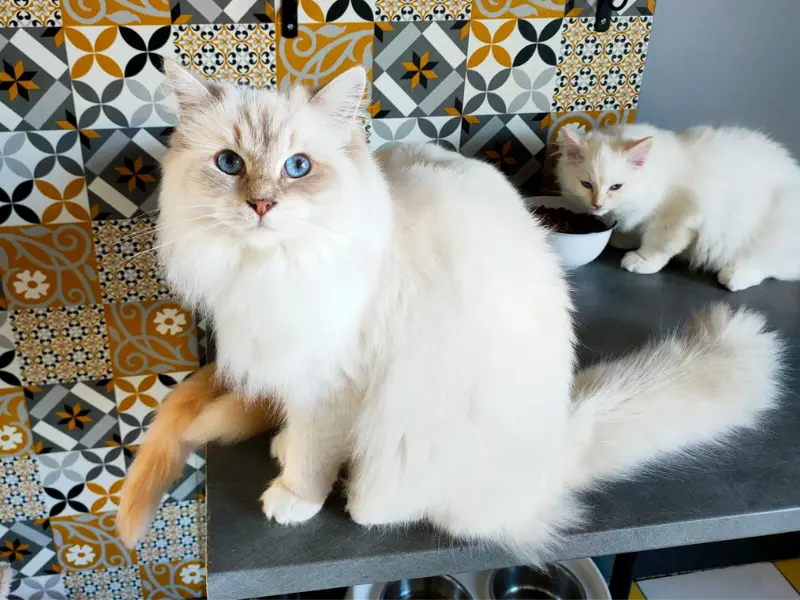
These cats are rare, playful and endlessly snuggly. Their mix of stripes and mittens gives them a one-of-a-kind look that melts hearts wherever they go.
How Rare Are These Lilac Variations?
If you have ever come across a Lilac Ragdoll, you already know they are like finding a hidden gem. But when you add unique variations like Tortie, Sepia or Tabby into the mix, their rarity goes up even more.
The reason comes down to genetics. The lilac color is a “dilute” version of chocolate and since both parents need to carry the right genes to produce lilac kittens, the chances are naturally smaller. That’s why breeders carefully plan pairings to bring these pastel beauties into the world. It takes patience, knowledge and a little bit of luck.
Some patterns like Lilac Tortie or Lilac Cream Lynx Point, are even harder to come by. For example:
- Torties are usually female because of the way their coloring is passed through the X chromosome.
- Sepias require special breeding lines to carry the trait.
- Tabbies (Lynx) add an extra layer of genetics on top of lilac, making them quite rare.
Because of this, Lilac Ragdolls (especially in unusual variations) are often more expensive than common colors like seal or blue. But to us, their beauty and personality make every penny worth it.
When we brought home our first Lilac Ragdoll, we knew we were welcoming not just a rare coat color, but also a lifelong cuddle buddy. Their rarity might make them special, but their love is what makes them unforgettable.
How to Care for These Rare Lilac Ragdolls?
No matter which variation of Lilac Ragdoll you fall in love with—Tortie, Solid, Sepia, Cream or Tabby—they all deserve the very best care. Their coats may look delicate and dreamy but with the right routine, keeping them soft and healthy is surprisingly simple.
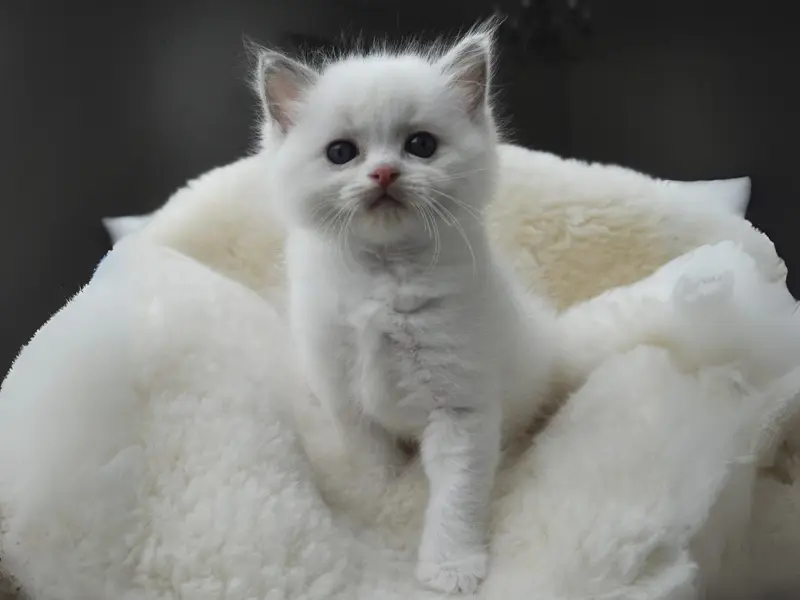
Grooming Their Silky Coats
Lilac Ragdolls have semi-long fur that’s silky rather than woolly which means it doesn’t mat as easily as some breeds. Still, we brush ours at least two to three times a week. Not only does this keep their coats smooth and shiny but it also turns into cuddle time. Our Ragdolls purr like little engines the second the brush comes out, it’s like spa day for them!
Keeping White Paws Sparkling
Many Lilac variations, like the mitted or bicolor, have adorable white paws and tummies. We have found that keeping these spots clean is easy with regular grooming and a soft damp cloth when needed. If your Ragdoll is anything like ours, they will proudly show off those mittens after a fresh clean.
Feeding for Coat Health
A balanced diet makes a huge difference in keeping their pastel coats shiny. We stick to high-quality cat food with lots of protein and omega fatty acids. It keeps their fur glossy and their energy playful. Of course, we also sneak in a few treats here and there because what’s life without a little spoilage?
Love and Playtime
While their coats may look fancy, at heart Lilac Ragdolls are playful, gentle cuddle bugs. They thrive on companionship, so we always make time for snuggles, games of chase with a feather toy and quiet evenings with a Ragdoll curled up in our laps. Honestly, giving them attention is the easiest part and they make it impossible to resist!
In short, caring for a rare Lilac Ragdoll isn’t about special tricks. It’s about consistency, love and turning daily care into bonding moments. With the right mix of grooming, good food and plenty of affection, your Lilac fluffball will stay healthy, happy and beautiful.
Conclusion
Lilac Ragdolls are more than just cats, they are pastel-painted cuddle buddies who brighten every corner of our homes. From the patchy beauty of the Lilac Tortie to the velvety glow of the Lilac Sepia, each rare variation feels like its own masterpiece. Add in Cream, Solid or Tabby patterns and you will get a whole gallery of fluff that’s as unique as it is heartwarming.
If you are lucky enough to share your life with a Lilac Ragdoll, treasure every moment—the soft purrs, the playful taps and the quiet times together. And if you are still dreaming of bringing one home, know that whether Tortie, Solid, Cream, Sepia or Tabby, every Lilac Ragdoll is a rare gift wrapped in fur.
Related Questions About Rare Lilac Ragdoll Variations
Here are frequently asked questions about Lilac Ragdoll Variations:
Rare Lilac Ragdoll variations are unique coat patterns and colors that go beyond the standard lilac shade. These include Lilac Tortie, Solid Lilac, Lilac Cream, Lilac Sepia and Lilac Tabby Ragdolls. Each variation has its own special markings, from pastel patches to soft stripes but all share the same sweet and cuddly Ragdoll personality we adore.
Lilac Ragdolls are rare because their coat color comes from a recessive gene. Both parents must carry this gene to produce lilac kittens which makes the chances smaller. When you add patterns like Tortie, Sepia or Tabby on top of the lilac coloring, the rarity increases even more.
Lilac Ragdolls usually have a soft gray coat with a pinkish or lavender glow. Variations add extra features: Torties have cream patches, Sepias look warmer and richer and Tabbies show faint stripes. If you are unsure, a breeder or vet can confirm your cat’s color genetics.
Yes, Lilac Ragdolls and their rare variations usually cost more than common colors like seal or blue. Their rarity, combined with careful breeding, often makes them more expensive. Prices vary depending on the breeder, location and specific variation.
Almost always! Lilac Tortie Ragdolls are nearly always female because the tortie pattern is linked to the X chromosome. Male torties are extremely rare and usually occur only with special genetic circumstances.
Not really. Rare Lilac Ragdolls need the same loving care as any other Ragdoll—regular brushing, a healthy diet and lots of snuggles. The only extra step is keeping their lighter coats, especially white paws and tummies, clean with gentle grooming.

- Be Respectful
- Stay Relevant
- Stay Positive
- True Feedback
- Encourage Discussion
- Avoid Spamming
- No Fake News
- Don't Copy-Paste
- No Personal Attacks



- Be Respectful
- Stay Relevant
- Stay Positive
- True Feedback
- Encourage Discussion
- Avoid Spamming
- No Fake News
- Don't Copy-Paste
- No Personal Attacks


